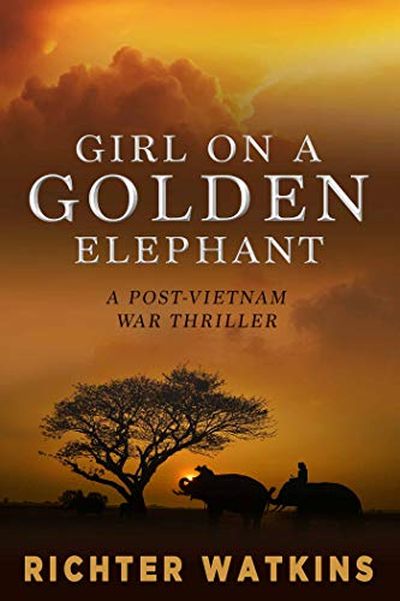Literary rating: ★★½
Kick-butt quotient: ☆☆☆
a.k.a. Lethal Redemption
 War correspondent Kiera Hunter goes out of her comfort zone, to try and solve a decades-old mystery related to her grandfather. He was a CIA pilot, on one of the last planes to get out of Saigon in 1975, but it crashed deep in the Laotian jungle, carrying a statue of deep iconic significance to the locals. This depicted legendary freedom fighter Trưng Trắc on an elephant, which will be significant later. After the death of her gramps, Kiera finds papers describing the location of the crash, and heads to the area to try and locate it. There she teams up with guide Porter Vale, but there are other, envious eyes after the cargo, and prepared to go to any lengths to obtain it.
War correspondent Kiera Hunter goes out of her comfort zone, to try and solve a decades-old mystery related to her grandfather. He was a CIA pilot, on one of the last planes to get out of Saigon in 1975, but it crashed deep in the Laotian jungle, carrying a statue of deep iconic significance to the locals. This depicted legendary freedom fighter Trưng Trắc on an elephant, which will be significant later. After the death of her gramps, Kiera finds papers describing the location of the crash, and heads to the area to try and locate it. There she teams up with guide Porter Vale, but there are other, envious eyes after the cargo, and prepared to go to any lengths to obtain it.
This is… alright, I suppose. To be honest, for someone who is allegedly used to operating in the most perilous of environments, Kiera comes over as quite naive and, especially in the early going, almost painfully dependent on Porter. I get it’s perhaps not her usual theatre of operations, and it’s wise to defer to somebody with local knowledge. However, the basic rules of operation are no different in the Middle East and the Far East. For much of the first half, this feels more like The Adventures of Porter Vale, and his tagalong sidekick. The other issue was one of the main villains being called… Luc Besson. Yeah. Somebody really didn’t like Angel-A.
Once Porter and Kiera cross the border into Laos, things do improve. Her free-climbing skills prove critical in the expedition reaching the plateau where the plane can be found. After they come under attack by Besson’s men, it’s also up to her to make her way back to the encampment of the local Hmong people. This is no easy matter, and nor is convincing them of the need to help. Fortunately the spirit of Trưng Trắc is there to lend a helping hand (told you it would be significant!). This isn’t as cheesy as it sounds, and is written with enough conviction to sell the concept. Although more liberal readers will perhaps snort something derisive about cultural appropriation, and the whole endeavour being an example of White Saviour Complex.
Personally, I’m more concerned with writing which seems to have a much better sense of location than character. Watkins does a decent job of capturing the colour of the settings, such as the frenetic urban pace of Saigon. This is in sharp contrast to the rural wilderness into which Keira is dropped, more or less literally. The people who inhabit it are considerably more thinly-sketched: Porter in particular never gets past being the square-jawed hero of a comic strip. He and Keira never have the chemistry necessary for the relationship depicted on the page, which fizzles when it needs to sizzle. I’m also disappointed Besson never got his butt kicked by the heroine. Surely that would have been the only appropriate fate to befall him.
Author: Richter Watkins
Publisher: Pryde Multimedia, available through Amazon, both as a paperback and an e-book
A stand-alone novel.




